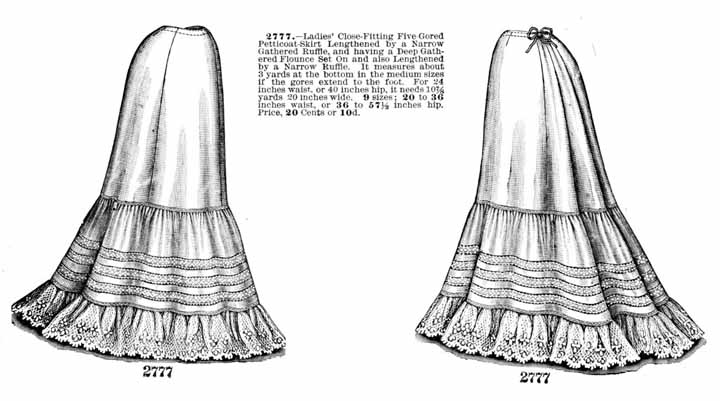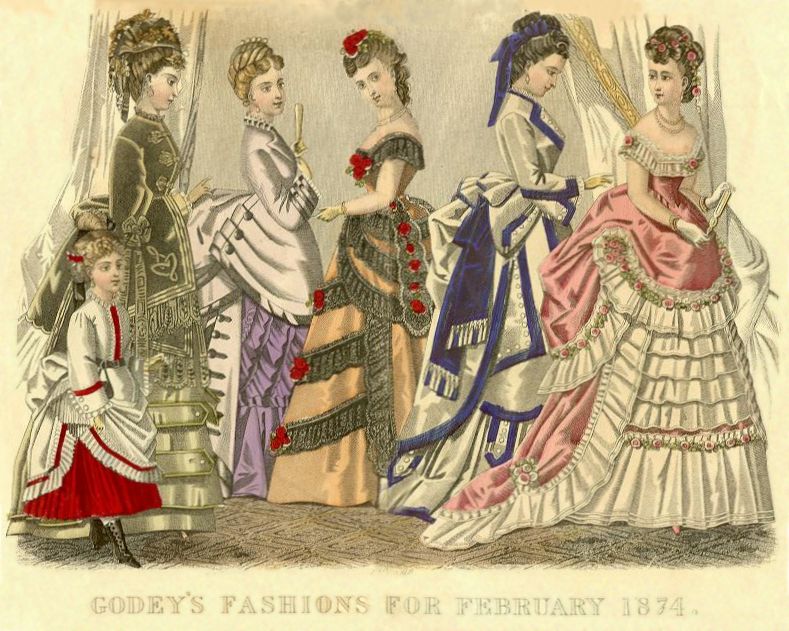Women
There was a fixated idea of what women should have looked like, therefore there was no worry about their comfort when they wore extremely right corsets, to exaggerate their waists and carry heavy underwires for hours. The process of getting dressed took hours,' the corset took two people to put it on and had to be very tight therefore limiting the breathing which made passing out common for women.'
An example of the process of a woman getting dressed and the layers of clothing she would wear. Drawers, Chemise, Corset, Petticoat, Corset Cover, Bustle, Underskirt, Skirt, Bodice, Beaded Capelet, and the accessories such as hats and fans.
The definition of the ideal beauty was taken from features of Queen Victoria. The elegance she carried alongside of her height, which meant having a tall physique however there was a mixture as women started to get more independence and form more power, they were able to use their beauty for control over men which meant that men found physically attractive women threatening.
Being feminine was very important in this era women always wore layers of clothing with multiple petticoats which could add up to 15 pounds of weight. The petticoats were made out of muslin, calico or flannel with quilting of wire, horsehair or whalebone. The last layer of the petticoat had girly and feminine designs of ribbons and flowers. It was essential to make sure the ankles of women were covered as it could ruin ones reputation if otherwise.
http://www.vintagevictorian.com/images/1902_petticoat2.jpg
The dresses that the women wore which consisted different colours and materials. The skirts have many different layers which was very heavy for them to carry. The corsets are extremely tight and some would get their ribs removed just so they could wear it. The colours in the beginning were very light however it then changed to from only children wearing the colour red to women also being allowed to wear them.
(http://www.victorianchildren.org/wp-content/uploads/2013/03/victoriandress81.jpg?w=540)
This is a portrait of the ideal Victorian woman compared to a prostitute of the Victorian Era. The woman in the first picture has long, long curls and is matched with a natural pale skin showing no make up in contrast to the woman in the picture on the right whose hair looks messy and her outfit shows skin on the ankles, stomach and chest which at the time would be seen as extremely vulgar and sinful.
http://www.pinterest.com/pin/493073859174094807/
https://s-media-cache-ak0.pinimg.com/236x/09/5b/28/095b282d4b2ee5420005cafa4b82d17d.jpg
Men
|




No comments:
Post a Comment